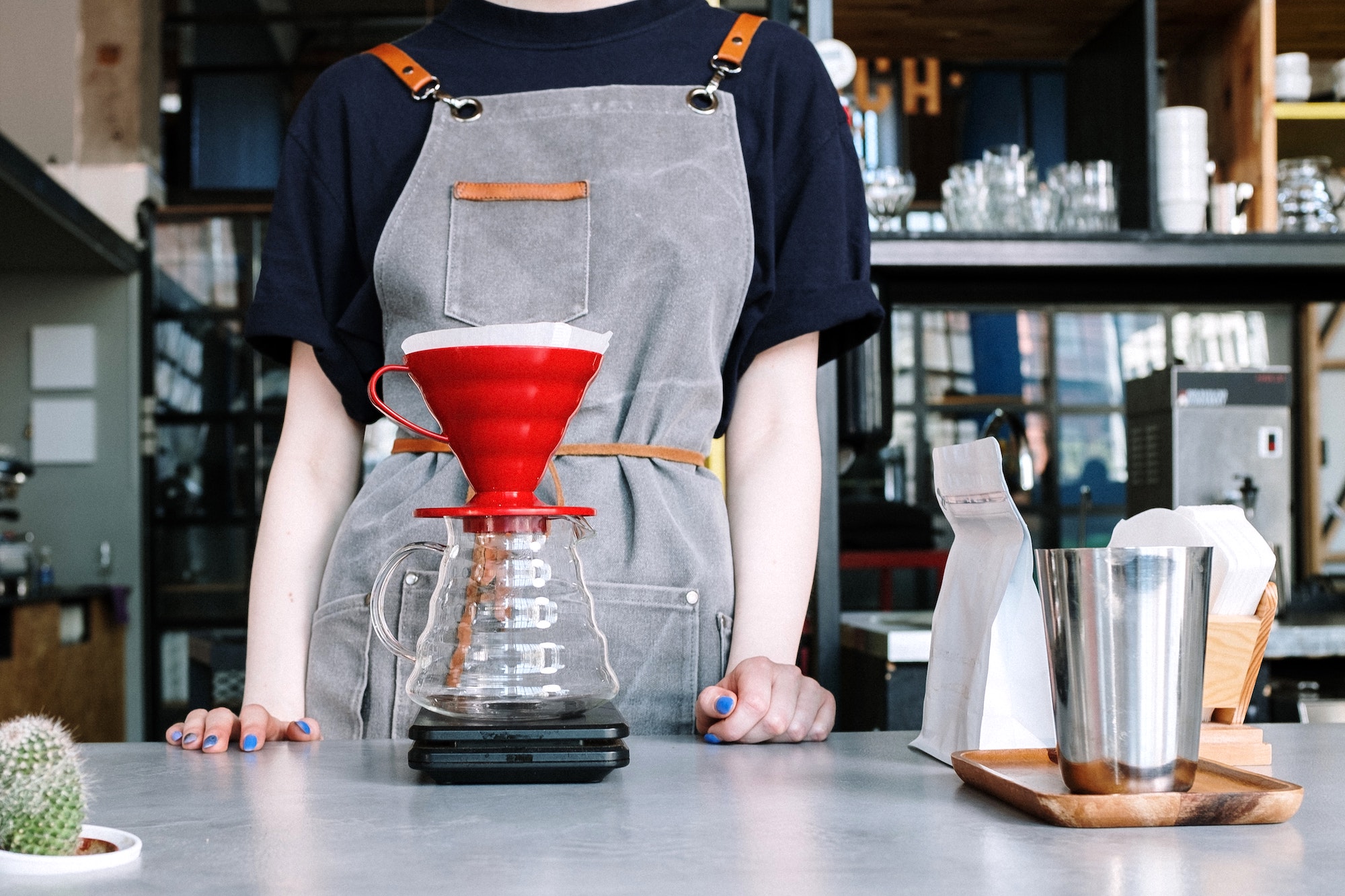It seems to be one of those things that people did to pass the time at home during the onset of the pandemic, like making banana bread and trying half-heartedly to learn a language. Home brewing is by no means anything new but about two years ago, it saw a boom among people who, granted more time at home than they knew what to do with, willingly ventured into a hobby that revealed itself to be a gateway to endless—and often, maddening—variability.
The kind of water you use, the grind size and roast level of the beans, brewing time, the decision to use either percolation or immersion brewing methods—these don’t even scratch the surface of the list of factors that can yield a different tasting cup every time you brew.
To outsmart this game of diminishing returns (for it is exactly that: an extra thousand pesos spent on new equipment will yield you little-to-no-difference in taste), we thought one route was to go through some of the most common (and beloved) brewing equipment, among which you can choose the one that suits you best. Pair that with your choice of beans and you get a daily driver that can help you simplify the decision-making that will go into your morning brew.
Hario V60
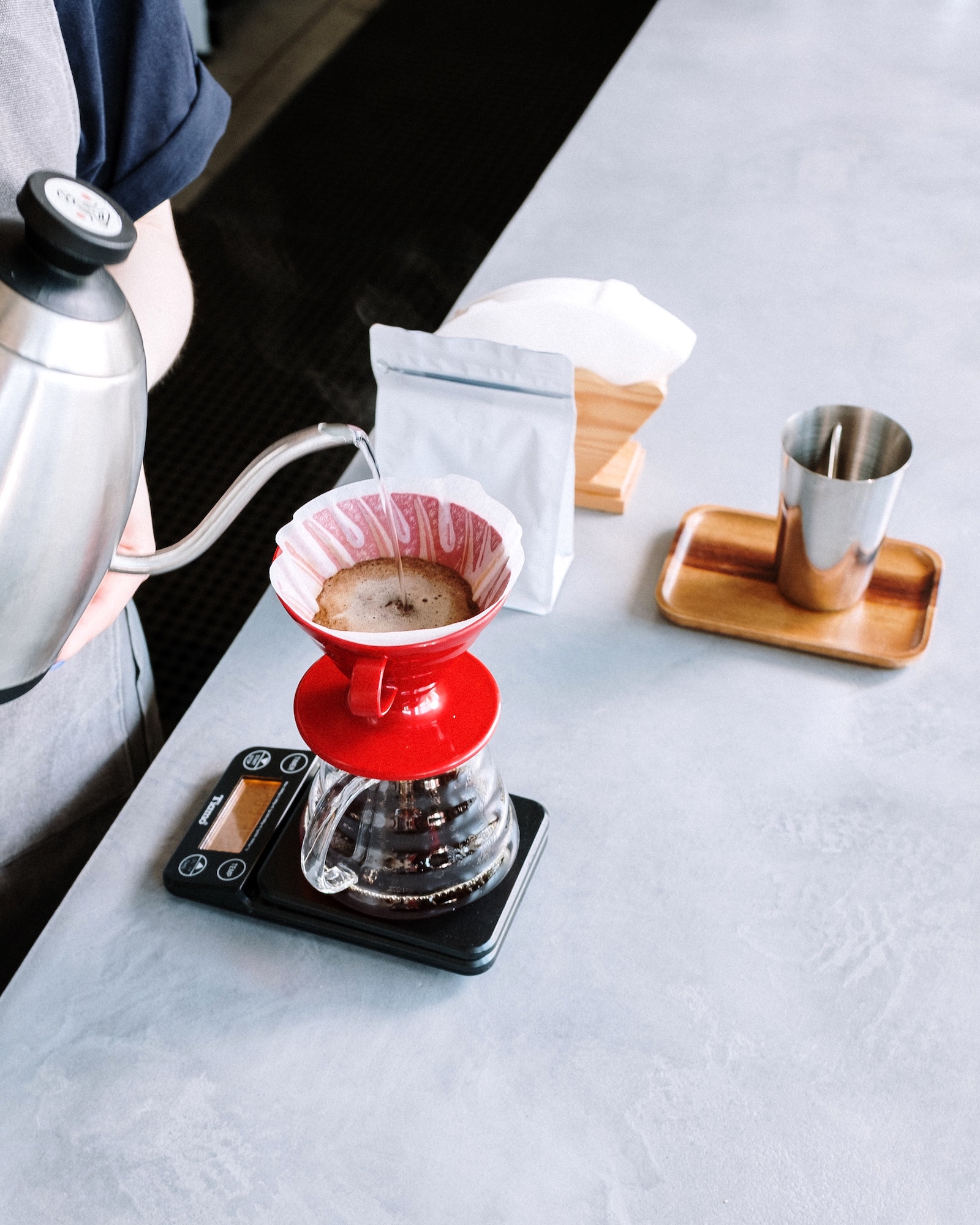
Arguably the most popular drip brewers among coffee fans, the Hario V60 is a versatile and inexpensive piece of equipment perfect for people who want a bit more control over their brews. You can adjust your pouring technique to suit your preferences. Generally, the V60 is known for producing flavorful and balanced coffee, owing to its design and the specialty paper filters that come with it: Its cone shape lets the hot water stay in contact with the coffee grounds longer (which, in many cases, helps with proper extraction); the paper filters, meanwhile, are extremely thin, allowing coffee oils to pass through.
Technique (and perhaps mastery thereof) is key when it comes to this brewer, so it will take a bit of practice before you can arrive at a cup you can be happy with.
Unlike other drip brewers, however, the V60 has a relatively large hole at the bottom and thus provides no resistance that can lengthen the period of contact between water and coffee, which, if you don’t use the proper pouring technique, can yield you an under-extracted brew. Technique (and perhaps mastery thereof) is key when it comes to this brewer, so it will take a bit of practice before you can arrive at a cup you can be happy with.
Get this brewer if you: Prefer lighter, clean-tasting brews with fruity notes and are excited about experimenting with different pouring techniques and tweaking variables until you find a unique recipe that is tailored to your preferences. People who use this tend to enjoy the brewing process as much as they do the actual coffee.
Recipes and techniques to try: James Hoffmann’s Ultimate V60 Technique is a well-loved, if not slightly too complicated, technique that promises even extraction. The 4:6 method by World Brewers Cup 2016 champion Tetsu Kasuya is also a well-known technique that yields a complex, sweet brew.
Buy this brewer at: Hario Philippines or Coffee Tonya
AeroPress
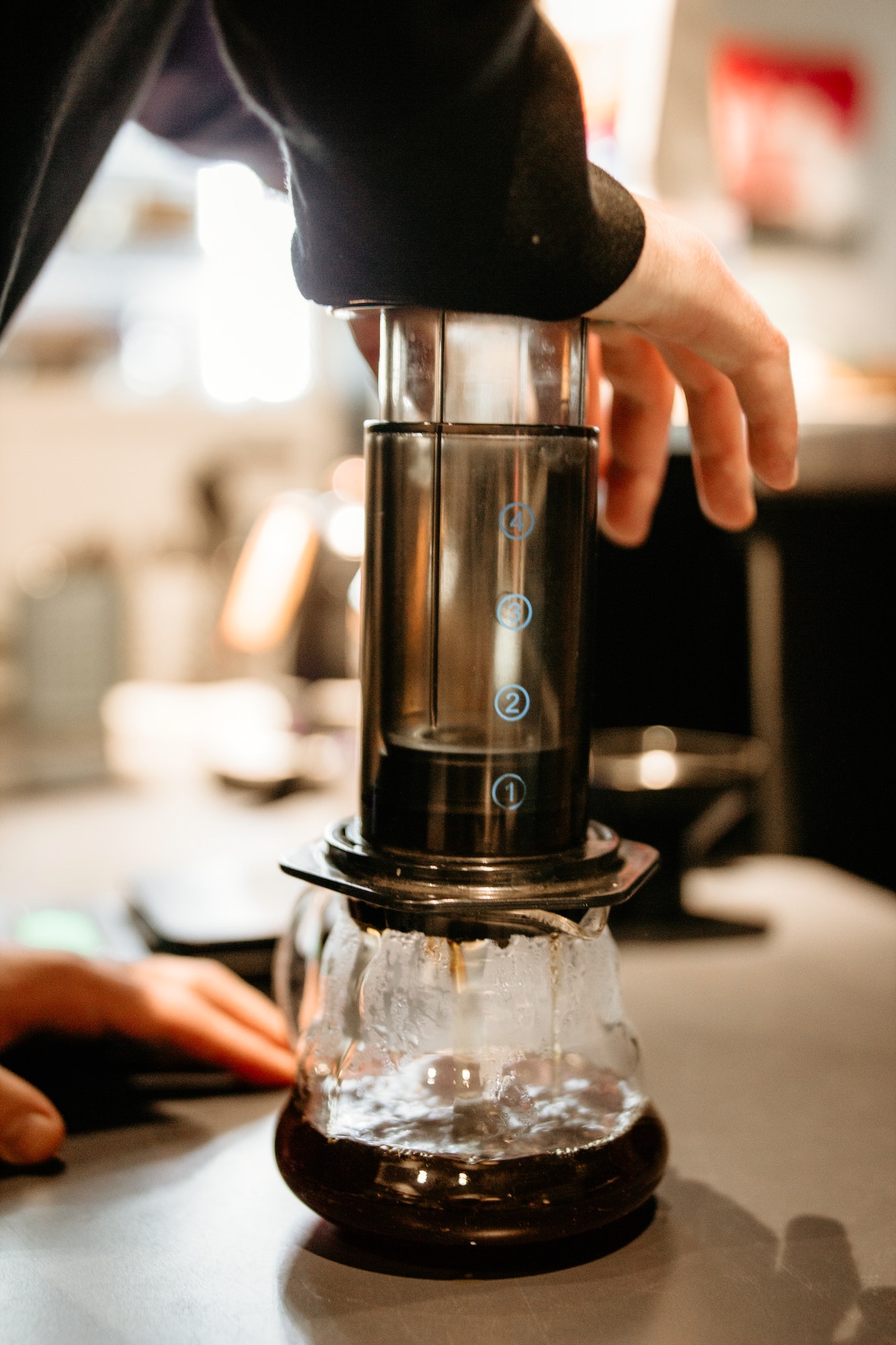
The AeroPress is a single-cup manual brewer that involves pushing steeped coffee through a fine paper filter. Invented in 2005 by Alan Adler, this brewer quickly became a global phenomenon when it became the preferred equipment of many home brewers and coffee experts alike and gave birth to its own competition (the World AeroPress Championship) just about three years after it was introduced to the market. The appeal of the AeroPress is that it proved to be a kind of antithesis to a pour-over such as the Hario V60, which requires a special pouring technique and additional equipment. The AeroPress is very easy to use, allows for variation with hardly any technique or previous experience in home brewing, and consistently yields a decent cup. It is, in this sense, foolproof and extremely reliable.
Its chamber-and-plunger design makes it very easy to clean (a simple rinse and wipe will do), but the downside to this design is that it can be prone to spillage and even lead to some minor accidents if too much force is applied to the plunger. It also, again, brews a single cup at time, so if you are brewing for many people, this might not be the right brewer to use.
Get this brewer if you: Have no previous experience brewing but are excited to start doing so. The AeroPress can yield espresso-like coffee, so this is also suitable for those who prefer stronger brews or anything that might come close to espresso without the need for an espresso machine.
Recipes and techniques to try: This website has over 110 AeroPress recipes. James Hoffmann’s four-part series on the AeroPress is an exhaustive guide that covers the brewer’s history, design, useful accessories and upgrades, and Hoffmann’s Ultimate AeroPress Technique. Lastly, if you are looking to make espresso-based drinks but don’t have an espresso machine, this video by Hoffmann features a technique that uses the AeroPress to create a flat white.
Buy this brewer at: AeroPress Coffee Maker Philippines, Everyday Coffee Roasters, Curated.ph
Moka pot
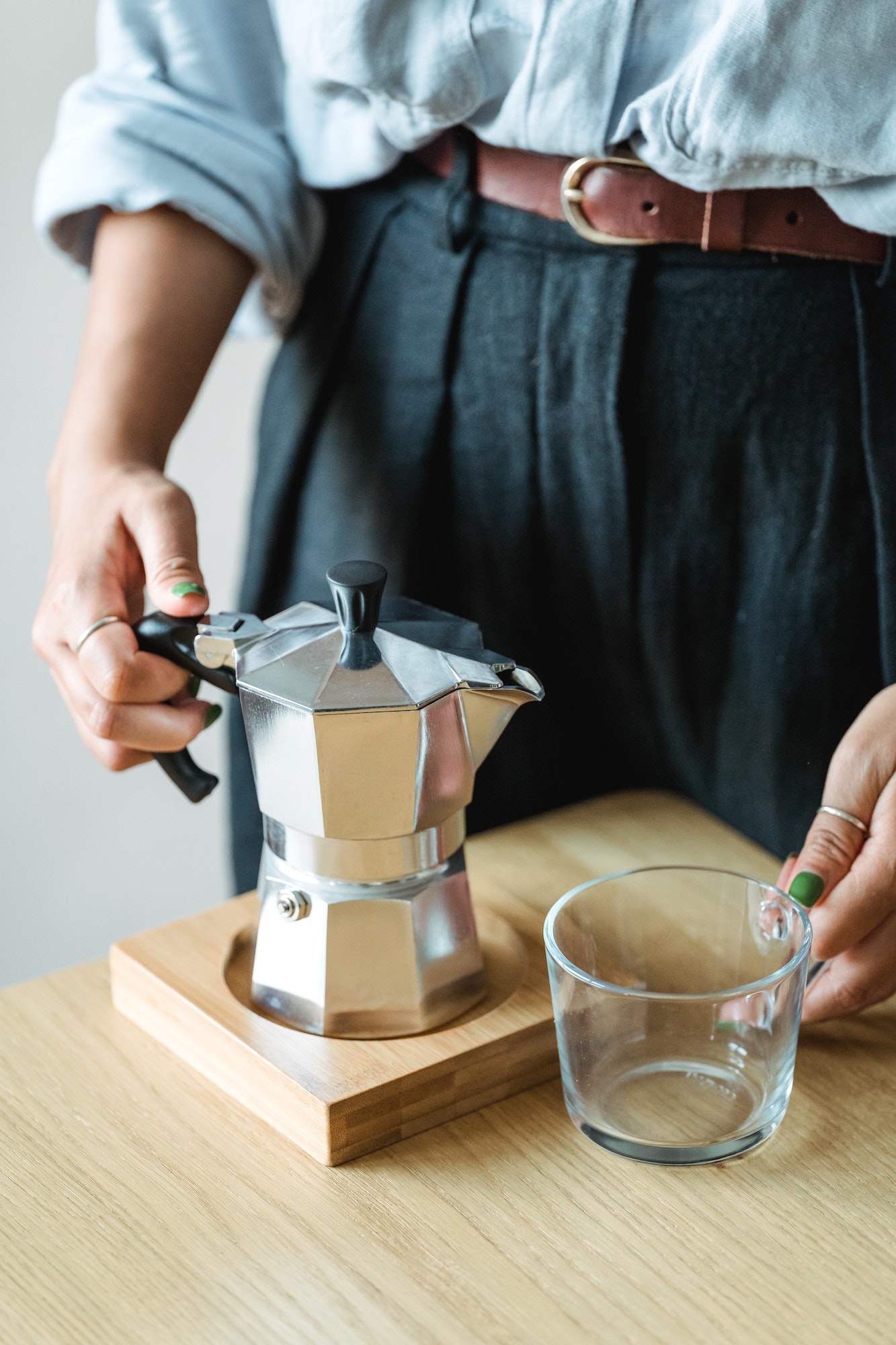
The iconic Moka pot was invented in 1933, and has since become a staple of every Italian household. You’ll recognize it the moment you see it. The brewer and its signature design has become so ubiquitous around the world, it’s practically shorthand for coffee. This stovetop coffee brewer, made primarily of aluminum, uses pressure to push hot water upwards through coffee grounds, yielding a very intense and bold-flavored cup.
The Moka pot consists of three separate chambers: one for the coffee, one for the water, and one for the end product. You can easily separate these pieces to follow a brewing technique that is fairly simple. Some things to watch out for when brewing with the Moka pot is its tendency to produce “burnt” tasting coffee (head on to the techniques section for tips on how to avoid this). You will also have to be cautious about handling it once you’re finished brewing as its material has high heat retention.
The Moka pot consists of three separate chambers: one for the coffee, one for the water, and one for the end product.
Get this brewer if you: Prefer a strong, rich cup of coffee that’s somewhere between an espresso and a drip coffee. It’s fairly easy to use but it is notorious for producing overly bitter coffee if used incorrectly. Lastly, we have to admit that the design is a major plus: It’s a fixture of modern industrial art so using this as your brewer is like owning art that is actually also functional.
Recipes and techniques to try: This video from ChefSteps featuring Hoffmann provides specific tips on how to avoid brewing bitter coffee: grind the coffee beans coarser than you would for espresso, don’t tamp the coffee, make sure to use hot water, and once done brewing, run the bottom of the brewer under some cold water. You can also follow Hoffmann’s detailed Ultimate Moka Pot Technique here.
Buy this brewer at: Bialetti Philippines and Barista Essentials Philippines
French press

As with the Moka pot, anyone would probably recognize the French press. Iterations of this classic brewer dates back to as early as 1852, and since then it has become one of the most recognizable pieces of coffee culture around the world. Consisting of a steel or glass jar and a plunger with metal filters, this immersion brewer requires minimal effort to produce delicious, clean-tasting coffee. It is also one of the most economical brewers. Brewing with the French press, however, will require a bit more time and patience: It takes about four to six minutes to steep the coffee and ensure proper extraction.
There is also a tendency for the grounds to not be properly filtered out once you pour your coffee into your cup, so you will need to take some time to wait for the grounds to really settle at the bottom; some attention should also be directed towards getting the right grind size (medium, not coarse, is highly suggested). For the same reason (i.e. the coffee can get muddy or gritty), pre-ground coffee does not work well with the French press.
Get this brewer if you: Prefer brews that take little effort and don’t mind waiting a bit longer to have your coffee. This brewer usually yields a clean, full-bodied cup that is just a bit richer than a pour-over coffee.
Recipes and techniques to try: Hoffmann’s Ultimate French Press Technique addresses the common issue of gritty/muddy coffee produced from a French Press.
Buy this brewer at: Manila Coffee
Chemex
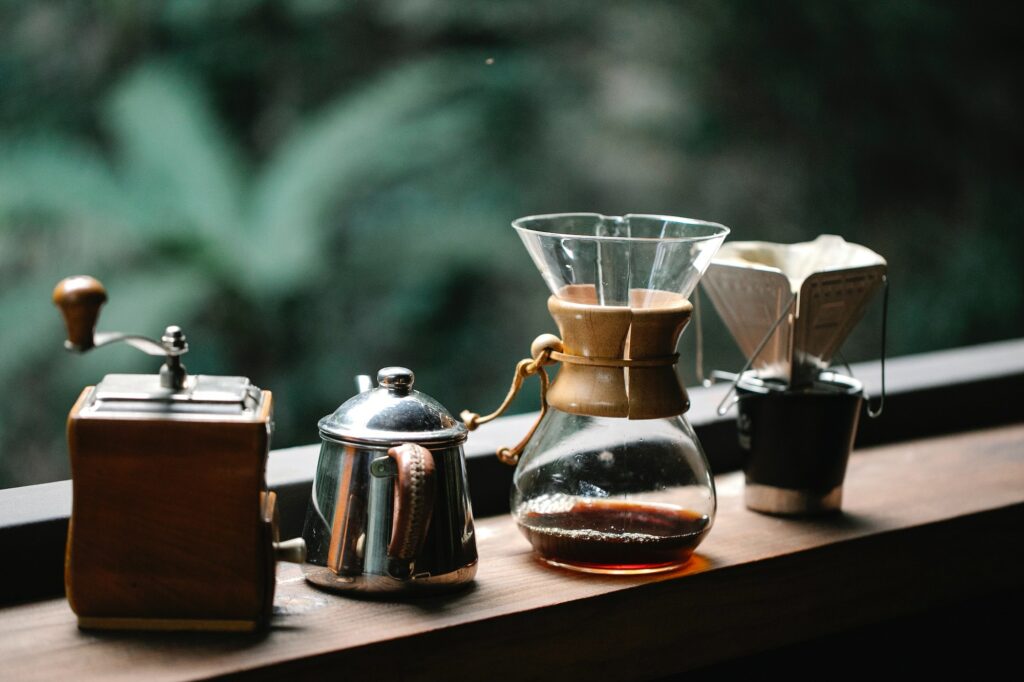
If the Moka pot is the symbol of Italian coffee culture, then the Chemex is what many would recognize as the quintessential American coffee brewer. Produced in 1942, the distinctly designed Chemex—a single glass pitcher-like brewer wrapped with a heatproof wooden collar and tie—is an elegant pour-over style glass coffee maker that produces clean-tasting coffee, owing to the thick paper filters that come with it.
Its design is probably the key thing to talk about when trying to learn more about the Chemex: the hourglass shape is not only worth noting for its aesthetic (it has been displayed in New York’s Museum of Modern Art), but also for the way that it affects the brewing of coffee. For one, the fact that the brewing cone and base are one allows for an airlock to form, which can possibly stop the coffee from flowing.
As with the V60, the Chemex is great for people who relish the brewing process as much as they do the actual coffee.
Again, the use of thick paper filters can be a disadvantage: Although the coffee will taste cleaner because of the filtering power of the paper, it can also result in a papery taste. All things considered, these are minor “flaws” to what is otherwise a reliable, beautifully designed (but fairly expensive) brewer.
Get this brewer if you: Enjoy making pour-over coffee (and have had some experience making pour-over coffee). As with the V60, the Chemex is great for people who relish the brewing process as much as they do the actual coffee (again, in the case of pour-overs like the V60, coffee that is light and clean-tasting).
Recipes and techniques to try: This video by Hoffmann covers the history and design of the Chemex, talks about why it is an enduring classic of the coffee world, and what the best grind size is to ensure proper extraction.
Buy this brewer at: The Vault.ph, iprice.ph





